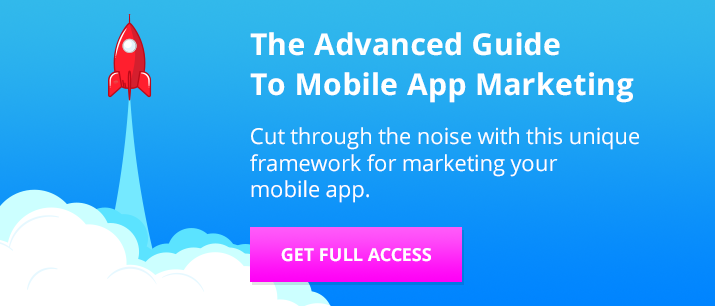How To Estimate ROI for Mobile Apps
“How do I show my potential investors an estimate of our expected returns for this app?”
– David | Entrepreneur
When you’re pitching your idea to your boss or potential investors, you need to have an understanding of what your estimated return on investment (ROI) will look like.
Making a call on ball-park return figures and promising to throw large sums of money at your marketing department whilst hoping for a profit is kind of like throwing a handful of cash into the air during a hail-storm and hoping that you catch it all before it lands and gets washed down a drain.
That idea, is pretty stupid.
It’s also a fast way for you to scare away any potential investors. If that’s the goal then you’re doing really well.
This is something that I’ve seen happen more than just a few times.
The result is often heart-break and confusion, leaving people asking, “What could you not like about my app? I promise it will make us money!”
You know that a mobile strategy will work, it’s where your audience spend 75% of their day.
But you can only hide behind the ‘greatness’ of your idea for so long.
You need to have researched projections and data-backed estimations or no one will take the idea seriously.
In this article I want to show you:
- How to estimate ROI for mobile apps.
- How to calculate your customer lifetime value.
How To Estimate ROI For Apps
Step 1
You need to decide how much money you will need for the development of the app + marketing spend.
Why Marketing?
If you are to launch an app you will need to communicate to your existing customers + potential new customers that you now have a downloadable mobile app.
For this example, let’s use your total initial investment as $120k inc. marketing spend. Just a ball park, nothing to get worried about.
Step 2
Estimate your earnings per year.
Estimations can be based on many factors, but they need to be backed by data.
You can base this on –
a) The revenue of similar apps or your projected figures based on your own average customer spend.
b) The market size and set a percentage of what you believe you can capture – be realistic!
If you are a startup, start off by researching the revenue of other apps in your market. You’ll also need to estimate the size of your market as a whole. This will give you an indication of how much of the market is taken up by competitors, and how much is available to you.
You’ll need to estimate a rough profit margin. Start with something like 5-10% to be within realms of realism. Keep in mind that the first awkward 18 months aren’t always profitable.
If you do find competitors in your market you’ll need to identify a gap. Use this Competitive Analysis Guide to identify weak spots and opportunities.
Step 3
A great way to estimate ROI is by using the ‘Cash Flow Method.’
- Open an excel spreadsheet
- Lay out a single row of years – Start with 5 years.
- In the first year show the total investment required as a negative number. Why? Because an investment is negative money…
- In the 1st through to the 5th year, show your estimated returns. e.g; If you set your goal as earning $80k in your first year, and $160k in your second year write it down. Remember: Growth can be exponential, not linear!
- Add those two rows together to get a ‘net cash flow’ number.
- Sum up the totals of all 5 years to get total money in, total money back, and net profit.
- Then use the ROI formula to get a % change in monies on investment.
ROI = Earnings – Initial Investment
Initial Investment
Eg; Year 1 = $80,0000 – $150,000
$150k
You have made back 53% of your total investment in the first year.
The dream of course is to make back your total investments in the first year, but be realistic…and patient.
The first year of launching an app, is like the first year of starting a brand new business. In fact, it IS starting a new business.
It’s the most important time to learn and gather data for improvements.
This will result in a steady increase in revenue over-time rather than a spike and plateau or loss of profits…
When you actually start making money, you can use this formula to track your ROI projections month on month and adjust your estimations based on % changes.
See More: Why Tech Companies Are Focusing On Growth First and Revenue Later.
Calculating Your Customer Lifetime Value (LTV)
What is customer LTV?
Customer LTV is the total amount of revenue a single customer will generate over the lifetime of the relationship with a mobile app.
This is from the time they first come into contact with the app by downloading it until it’s no longer used.
This includes paid downloads, in-app purchases, word of mouth and social sharing.
Why do you need to know your customer LTV to work out your ROI?
LTV is one of the most important metrics that drives profit in your business. In essence, the longer a customer stays with you, the more they’re likely to spend.
Firstly, it measures the profitability of users, which will help you identify more lucrative customer segments.
Second, it takes future profits into account, and hence is more farsighted.
Customer lifetime value formulas can be as complicated or as simple as you want.
A basic formula is: take the revenue you earn from a customer, e.g., their average spend in the app, and subtract out the money spent to acquire the customer. Then based on average lifetime sessions, calculate how much money they will spend in your app.
This formula fails to take into account things like social engagement, but there are advanced LTV calculators that can help you create a more complicated picture of LTV.
Once you have begun collecting data from your app you can start to make more accurate projections of your LTV and ROI.
But for now…just set an LTV projection for each year and multiply it by number of customers/users you intend to attain.
Keep in mind that LTV is heavily affected by your monetisation strategy.
All apps are different and there are MANY options for how to make money from an app. So there isn’t an average return per monetisation strategy as such. But if you set a target LTV at least you have something to work towards, and can pivot if your target’s aren’t achieved within the time allocations.
The Drivers of LTV
- Monetization: How much customers spend over their lifetime in the app. Average revenue per user, daily active users/monthly active users, paying users.
- Retention: also includes engagement; how often people come back to app? How frequently they return within a certain period of time? How often they stay in the app when they use it? Much of your time and energy will be focused around how to engage and retain your current and future users.
- Virality: How many additional users each user will bring in? (usually measured over a specific time period).
This is a systematic approach to app development, designed and intended to de-risk the investment for all parties. At the end of the day, we’re not here to gamble – we’re here to build successful companies that solve real world problems.
Investment is a risky game, but only those who risk going too far can find out how far they can actually go.
Was this post helpful? Comment below if you would like to share any of your own methods.
Latest posts by Logan Merrick (see all)
- Ep 18: Collective Campus’ CEO on Intrapreneurship and Corporate Innovation - December 20, 2016
- 50 User Engagement Strategies For Planning Memorable Mobile Experiences - December 19, 2016
- Latest Data: App Monetisation Trends And Drivers 2015-2020 - November 25, 2016






